Like most men at the time, he wanted to serve his country during World War II.
Shot Down
On Christmas Eve, 1944, Lt. Loring flew his last WWII mission.
He advised the flight he was heading west, but they could not follow.
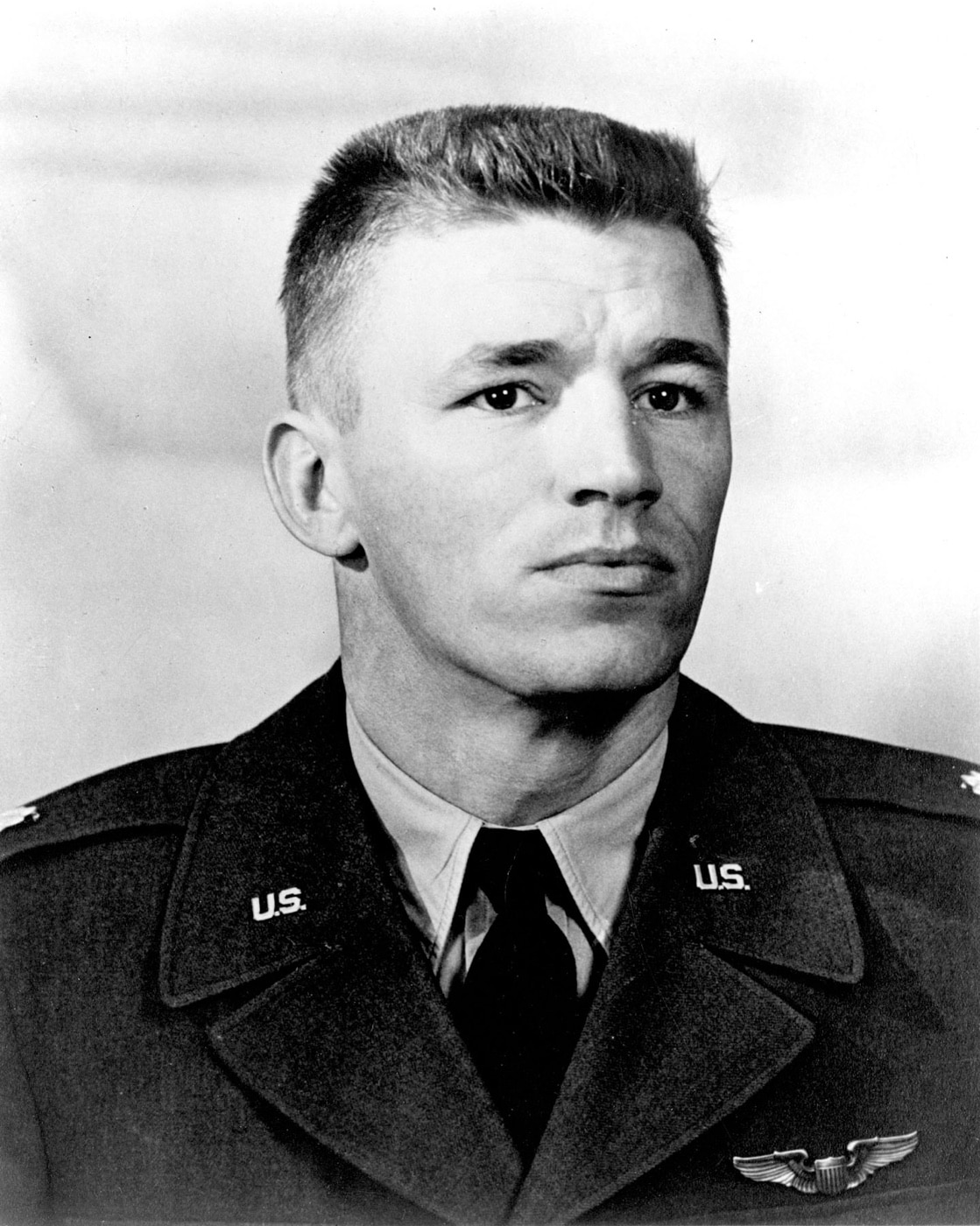
Maj. Charles J. Loring Jr., U.S. Air Force, died during combat against the Communist Chinese during the Korean War. He was awarded the Medal of Honor posthumously. Image: U.S. Air Force
Loring bailed out near Hotton, Belgium, and was captured.
Loring returned to the U.S. and was promoted to Captain.
While assigned there, Loring flew 50 combat missions in his first four months.
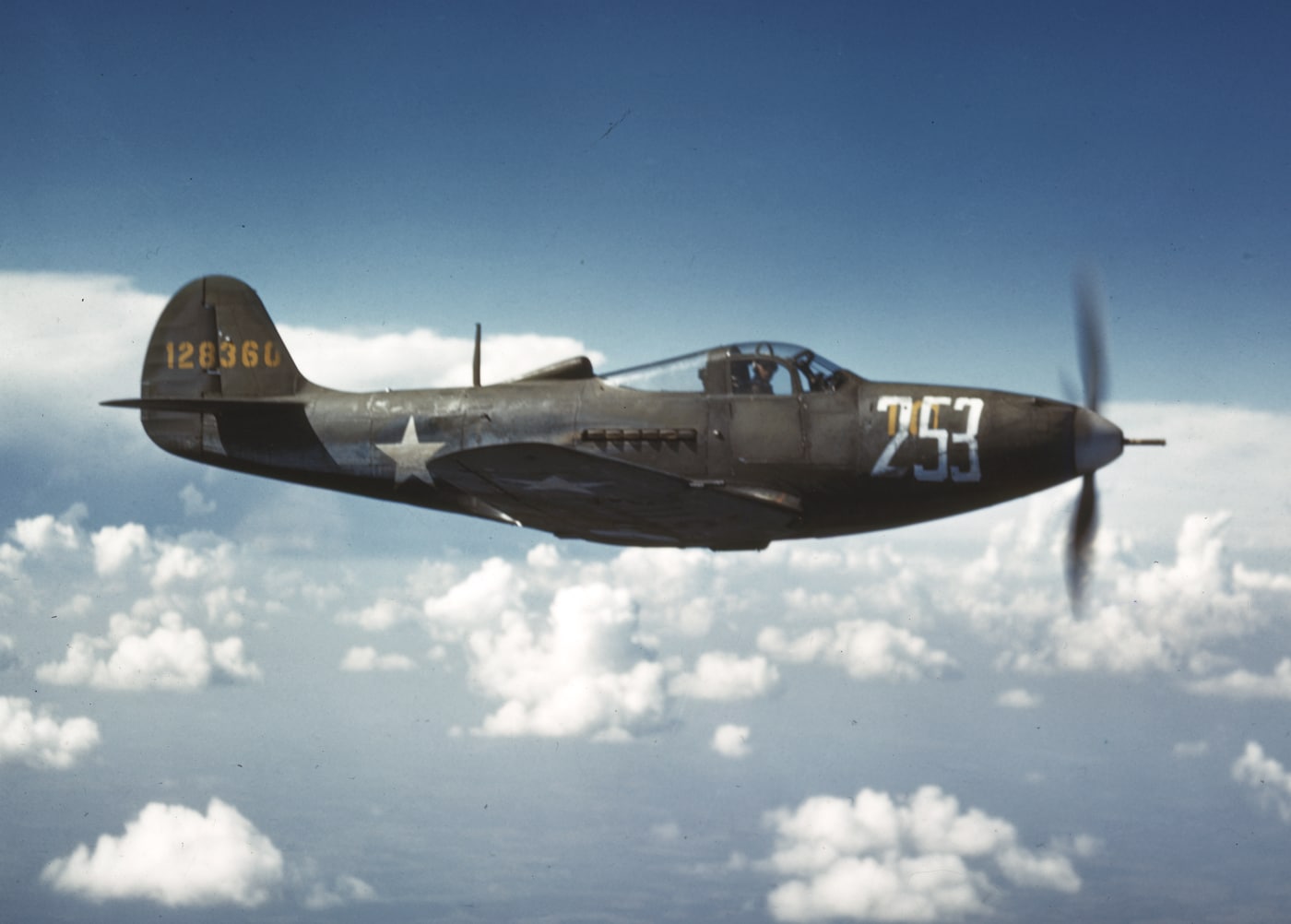
The Bell P-39 Airacobra was one of Loring’s first combat aircraft. He flew it and the P-40 Warhawk while stationed in Puerto Rico. Image: NARA
The artillery position was also being protected by a Chinese anti-aircraft battery.
As the formation arrived on station, Major Loring confirmed the target and rolled into his bomb run.
His aircraft began taking accurate ground fire from the Chinese gun crew.
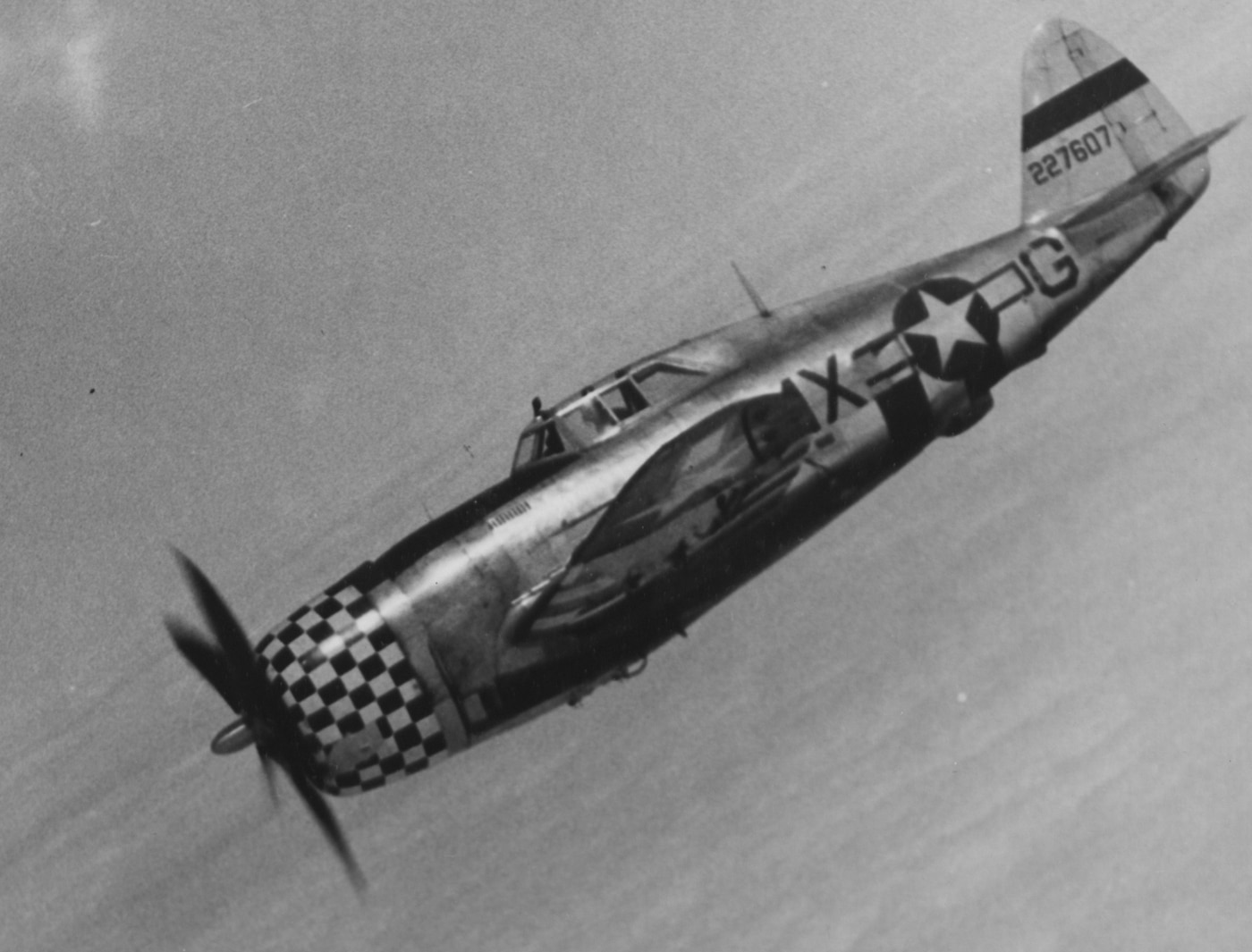
When he deployed to the European Theater of World War II, Loring began flying the Republic P-47 Thunderbolt. Image: NARA
His F-80 took repeated hits on the nose and fuselage.
Lorings remains were never recovered.
At the end of 1953, his status was changed from missing in action to killed in action.
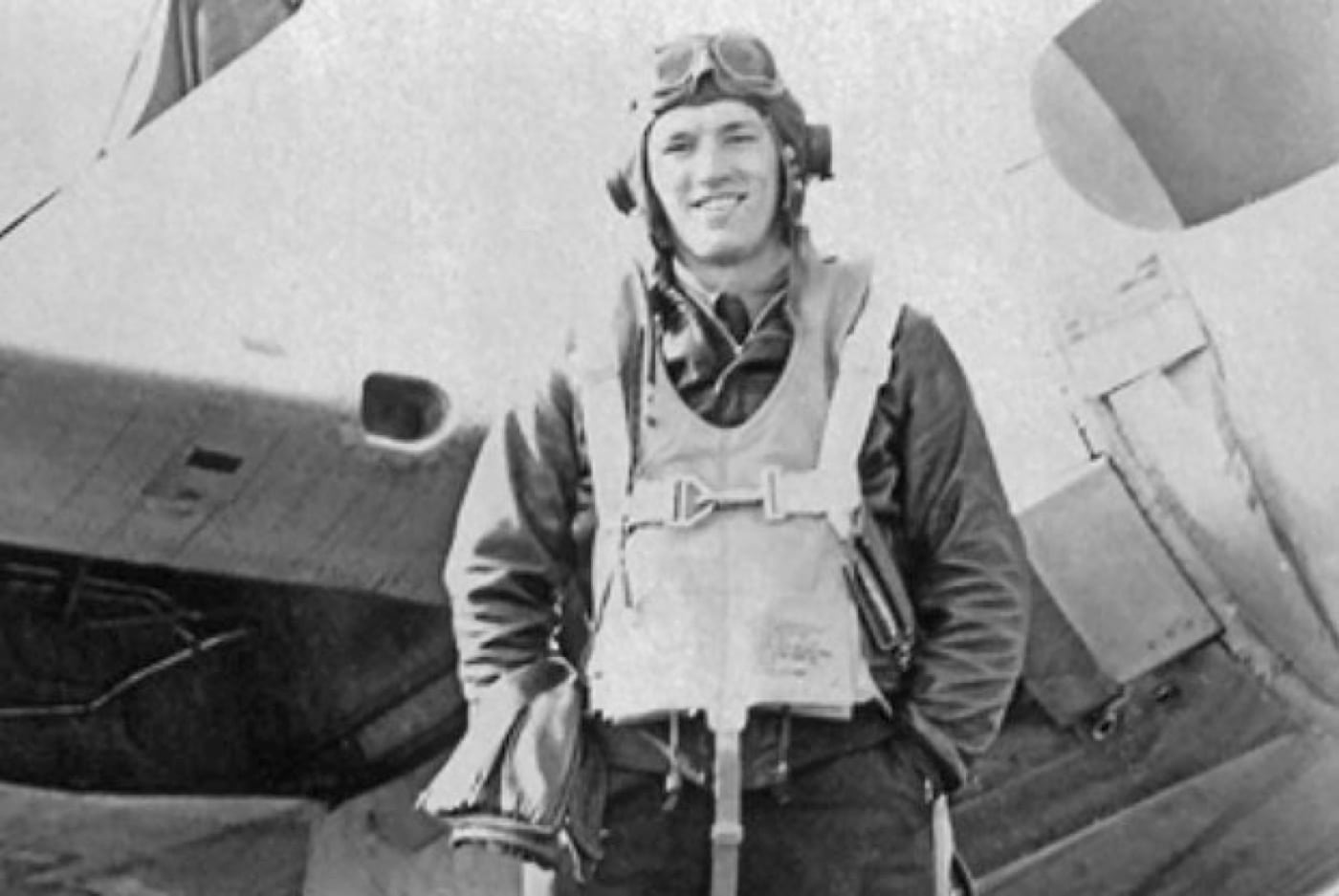
Loring poses in England for a photograph in front of his P-47. His final combat flight of the war was on Christmas Eve, 1944. He was shot down over Belgium and taken as a POW. Image: Library of Congress
The Medal of Honor was awarded again in April 1954, but with much more fanfare.
After verifying the location of the target, Major Loring rolled into his dive bomb run.
Throughout the run, extremely accurate ground fire was directed on his aircraft.
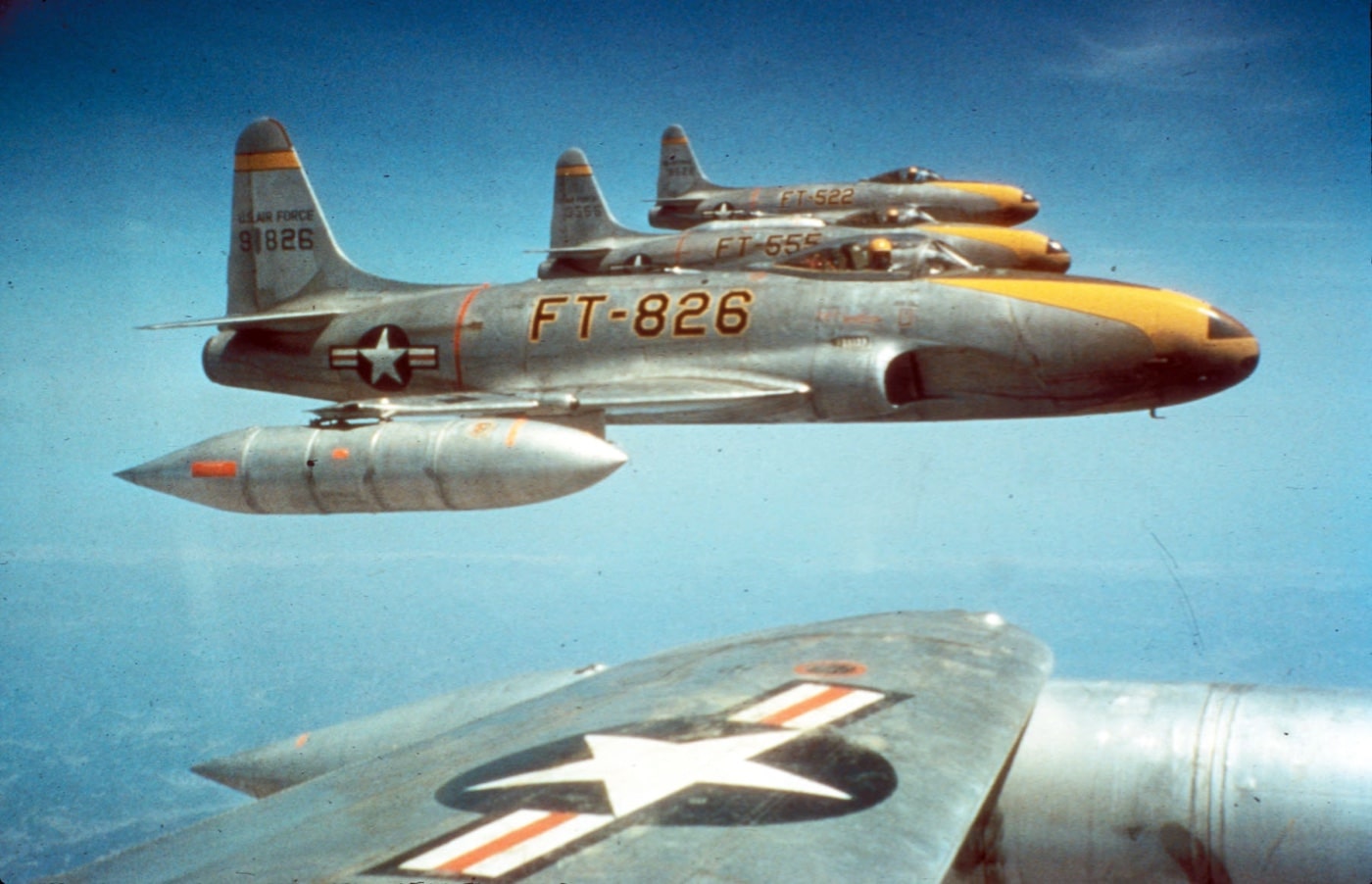
During the Korean Conflict, Loring flew the Lockheed F-80 Shooting Star in combat against the communists. Image: NARA
Additional Honors
Loring was promoted to Major just two months before his death.
The combined enlisted/officer club at Kunsan AB, South Korea, is named in his honor.
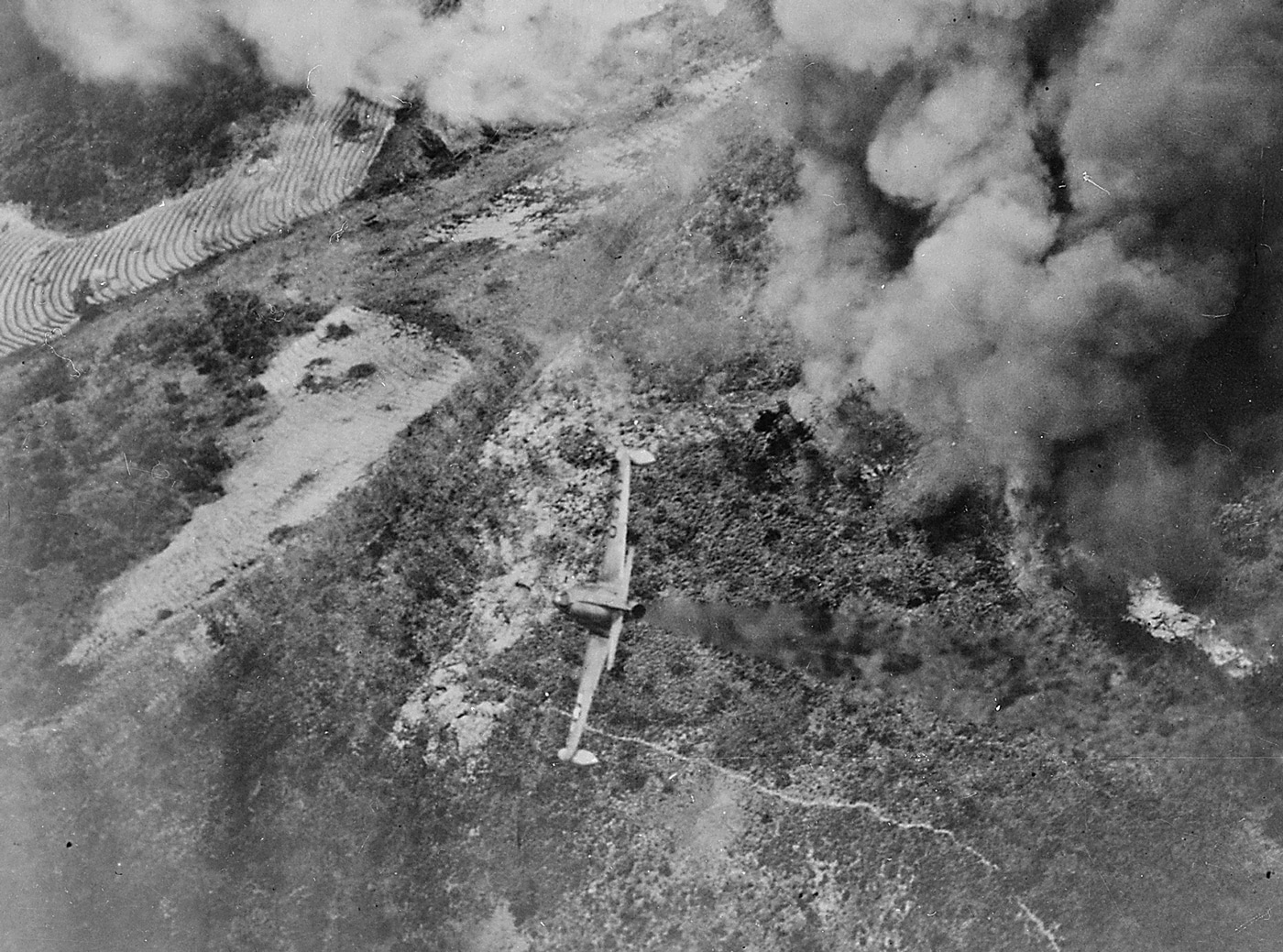
Dense clouds of smoke from earlier attacks obscures much of the target area as an F-80 Shooting Star banks sharply to line up another Korean communist target in its gunsights. Image: NARA
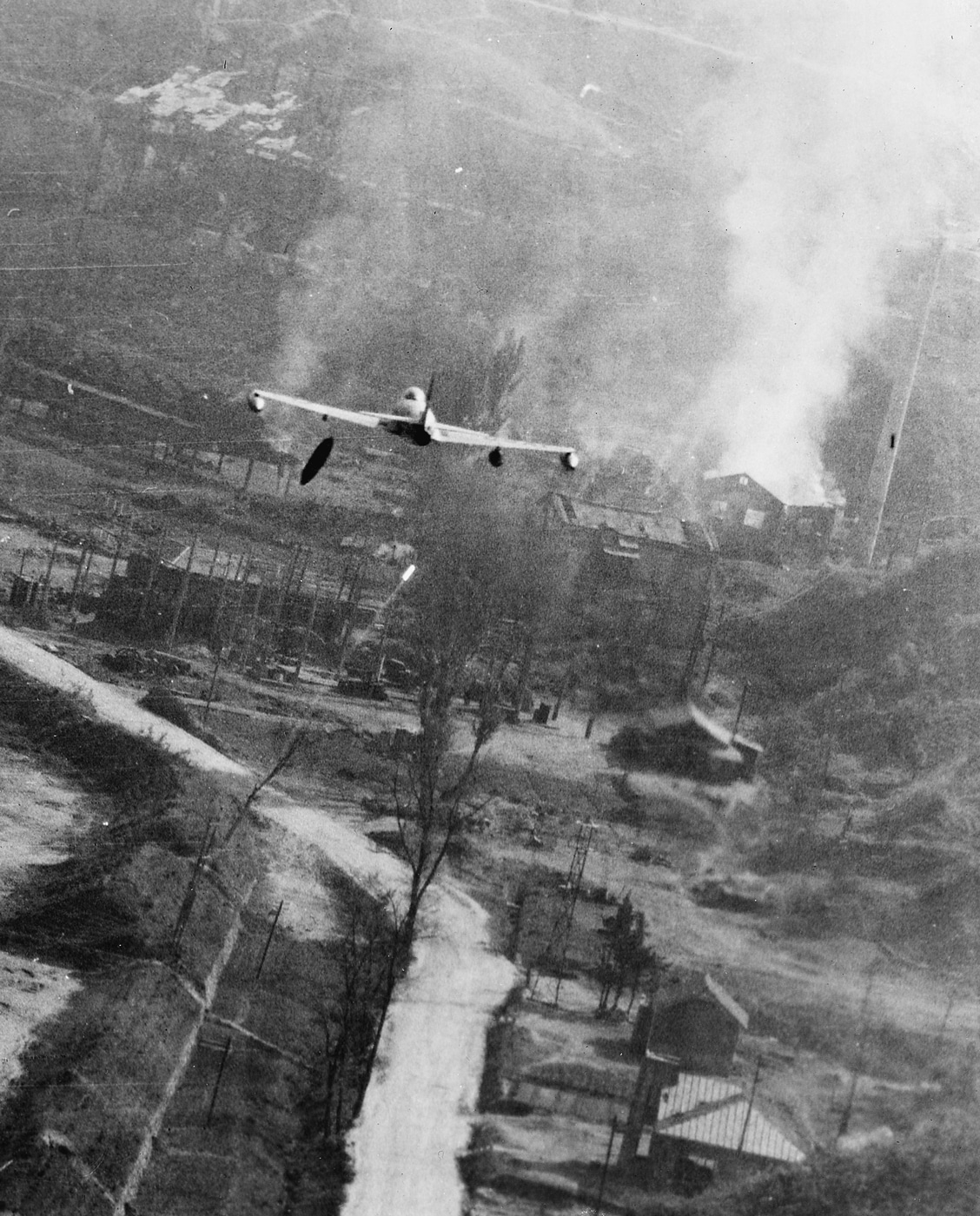
This F-80 Shooting Star is shown attacking a Chinese position near Pyongyang, North Korea in May 1952. Roughly 12,000 gallons of napalm were dropped by F-80s on the supply center. Image: NARA
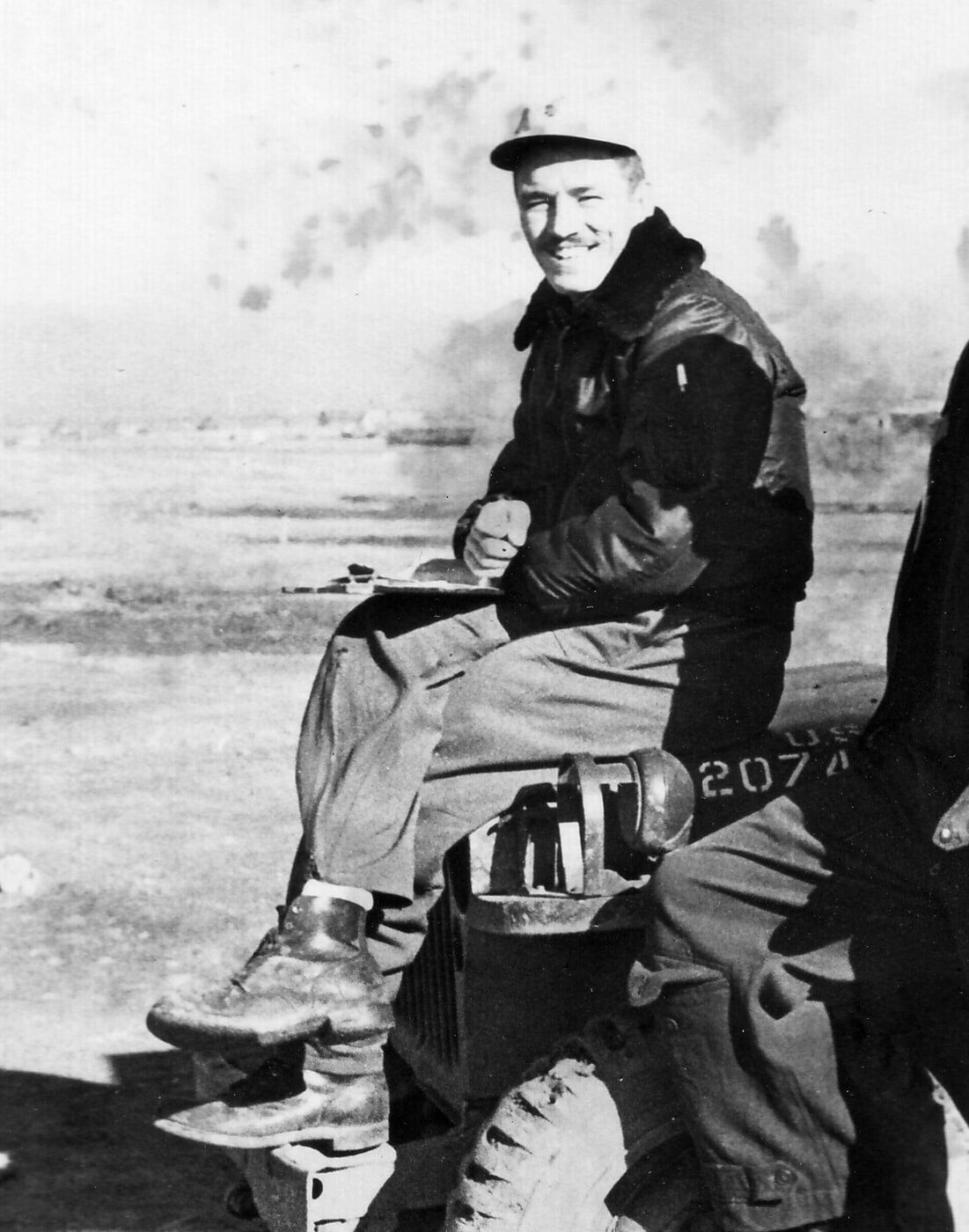
Maj. Loring is photographed at Air Base K-13 in Suwon, South Korea during late 1950. Image: U.S. Air Force
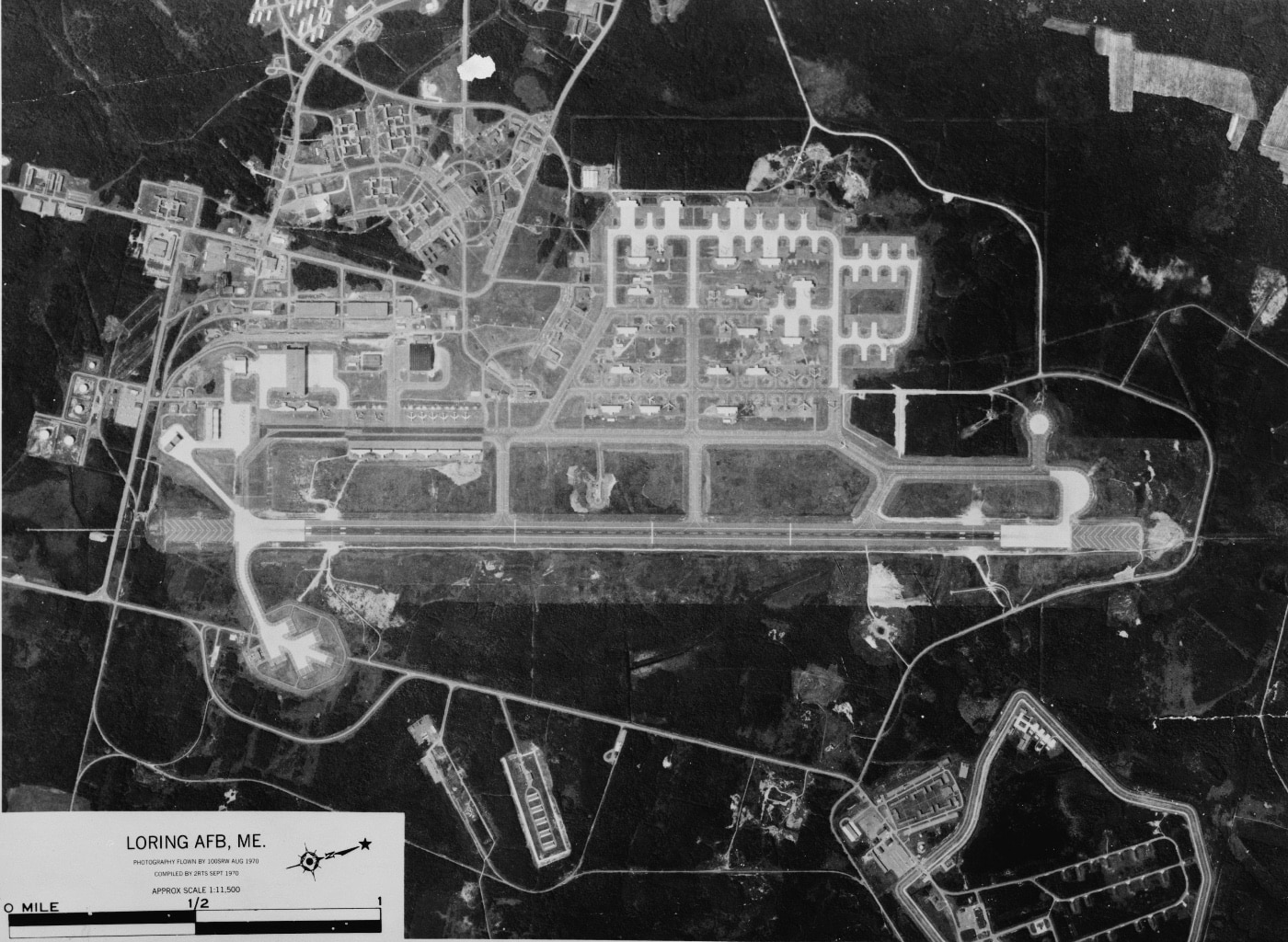
This 1970 photograph shows an aerial view of Loring Air Force Base.B-52 bombersand other planes can be seen scatter about the field. Image: Library of Congress




